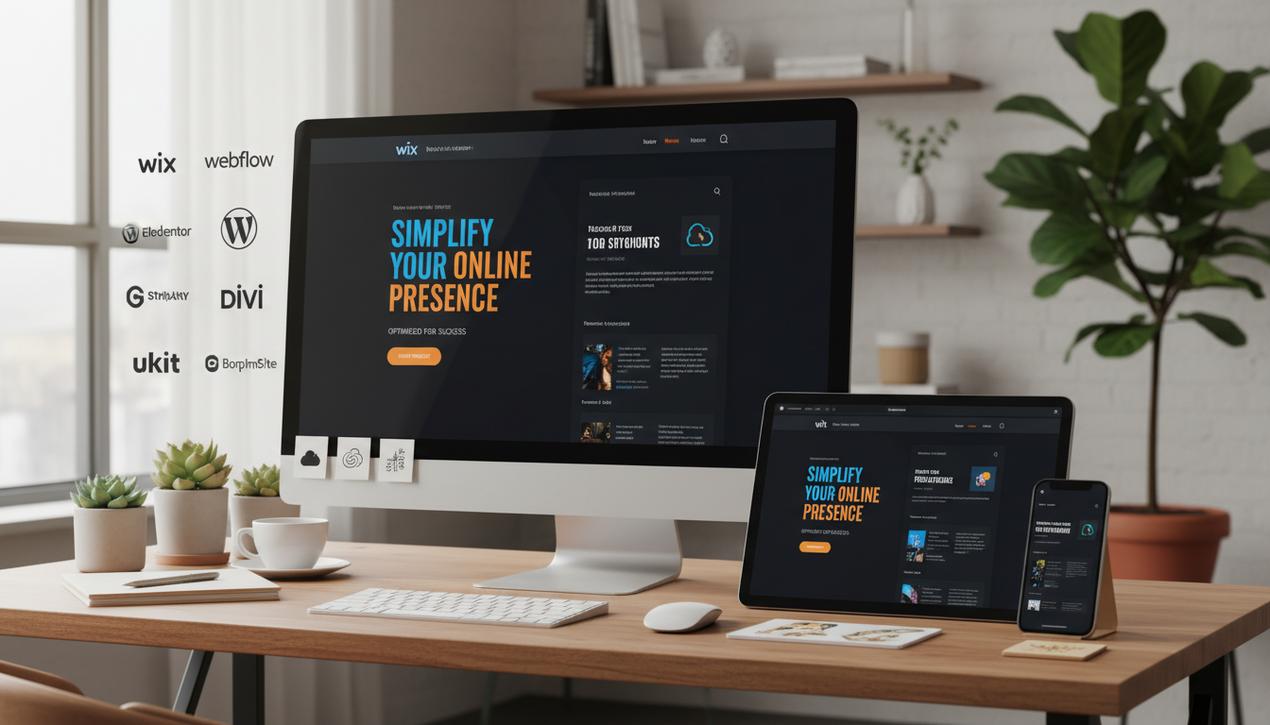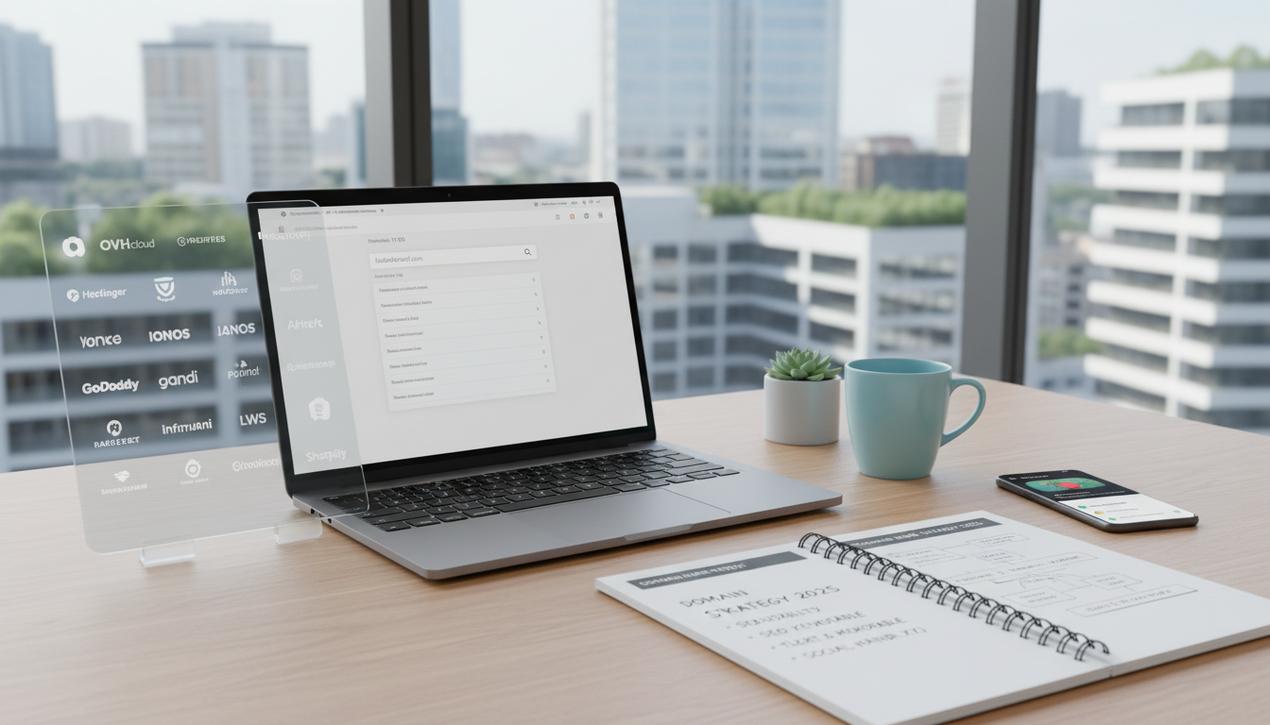Create a One-Page Website: The 2025 Guide, Tools & Examples


In a digital ecosystem where speed and simplicity reign supreme, the one-page website has emerged as an essential format. Far from being a fleeting trend, it addresses a fundamental need: to capture attention and deliver a clear, direct message. For businesses, freelancers, or product launches, it’s a powerful showcase. Statistics confirm this: a well-designed site focused on a single objective can achieve conversion rates exceeding 5%, more than double the general average. Conversely, over 53% of visitors will abandon a page if it takes more than three seconds to load. The one-page format, with its optimized nature, directly addresses this performance challenge. It transforms browsing into a fluid, narrative experience where each section guides the user toward a specific action. This comprehensive guide covers everything you need to know to succeed with your one-page website in 2025, from strategic advantages and SEO challenges to the best tools and must-follow design trends.
What Is a One-Page Website and Why Is It So Popular?
As its name suggests, a one-page website condenses all of its content onto a single web page. The user navigates vertically by scrolling, often aided by anchor links in a fixed menu that allow them to jump between sections instantly.
The Core Principle: A Linear, Immersive Story
The strength of a one-page website lies in its narrative structure. It tells a story in a linear fashion: who you are, what you offer, why it’s the best solution, and how to take action. This continuous flow eliminates the friction of traditional navigation (clicks, multiple page loads) and keeps the user focused on the main message. It is the ideal format for showcasing a single product, a portfolio, an event, or a small business profile.
Key Advantages for Your Digital Strategy
Adopting a one-page format offers tangible, measurable benefits that are particularly valued by agile organizations.
- Conversion Optimization: By focusing all content on a single goal and a single call-to-action (CTA), you guide the user without distraction. Studies show that limiting offers to one per page can dramatically increase conversions.
- Superior Mobile User Experience (UX): Scrolling is a natural and intuitive gesture on a smartphone. A one-page site is natively mobile-friendly, providing a seamless and uninterrupted experience, which is critical when over half of all web traffic comes from mobile devices.
- Simplified Maintenance and Updates: Managing a single page is far simpler and faster than maintaining a complex site structure. Content and design updates are centralized, reducing maintenance time and costs.
- Lower Creation Costs: Fewer pages to design, develop, and write content for means a more controlled budget and a shorter time to launch. It is often the most cost-effective solution for establishing a professional online presence.
The Drawbacks and Challenges to Overcome
Despite its many advantages, the one-page website is not a one-size-fits-all solution. It has limitations that you must consider before committing to the format.
The Search Engine Optimization (SEO) Hurdle
This is the format’s main weakness. An effective SEO strategy, which you can track with powerful SEO tools, relies on ranking multiple pages, each targeting a specific keyword or search intent. With a one-page website, you have only one page to optimize. This makes it extremely difficult to rank for a broad range of keywords. Therefore, this format is not recommended if your customer acquisition strategy relies heavily on organic search traffic.
The Risk of Information Overload
Trying to cram too much information onto a single page can make it confusing, long, and slow to load. The content must be concise and to the point. If your business requires detailed service descriptions, complex case studies, or a blog, a multi-page site will be more appropriate.
An Unsuitable Format for Complex Projects
E-commerce sites with many products, content platforms like online magazines, or corporate websites with multiple departments cannot function on a one-page model. This format is designed for simplicity and focus.
The 9 Best Tools to Build a One-Page Website in 2025
Numerous platforms now allow you to create a one-page website intuitively, with no coding required. Here is a selection of the top performers.
- Wix (Freemium): Extremely popular and user-friendly, Wix offers hundreds of templates dedicated to one-page sites. Its drag-and-drop editor is very intuitive. The free version displays ads, but premium plans are affordable for getting a custom domain and more features.
- Webflow (Freemium): More powerful and flexible than Wix, Webflow is for those who want total design control without sacrificing usability. It offers advanced animation and interaction capabilities. It has a steeper learning curve, but the results are often more professional.
- WordPress (Free + Associated Costs): The world’s most popular CMS is a highly flexible option thanks to visual page builders like Elementor or Divi. These tools allow you to create complex layouts with a drag-and-drop interface. However, you will need to manage your own hosting and choose your domain name carefully.
- Carrd (Freemium): Specifically designed for creating simple and elegant one-page sites. Carrd is incredibly fast to learn and very affordable. It’s the perfect tool for a landing page, a personal profile, or a digital business card.
- IM Creator (Freemium): A modern builder that emphasizes responsive designs. Its free version is generous, even offering the ability to connect your own domain name and integrate a simple e-commerce solution, which is a rare feature.
- Strikingly (Freemium): As its name suggests, Strikingly specializes in one-page websites. The tool is designed to be extremely simple and fast, allowing you to publish a site in minutes from polished templates.
- uKit (Paid): A very affordable platform offering hundreds of templates categorized by industry. uKit is designed for beginners and includes basic promotional and SEO tools for a competitive price.
- Bookmark (Paid): This tool uses an AI-powered design assistant (AIDA) to generate an initial version of your site in minutes. It’s an interesting option for small business owners lacking design inspiration.
- SimpleSite (Freemium): Its name says it all—simplicity is its priority. This tool is for absolute beginners who want to publish a basic page very quickly. The free plan is functional but includes ads.
2025 Design Trends for a Stunning One-Page Website
For a one-page website to stand out, its design must be flawless. Here are the trends dominating in 2025.
- Bold and Expressive Typography: The choice of the right web safe fonts is becoming a central design element, used in large sizes to create a strong visual impact and convey brand personality.
- Micro-interactions: Subtle animations that trigger on hover or scroll (a button changing color, an icon animating) make the experience more lively, engaging, and intuitive.
- Dark Mode and Vibrant Contrasts: Dark mode, paired with bright, saturated colors for key elements, creates a modern and elegant aesthetic that makes content pop.
- Asymmetrical Grids and Overlays: Breaking from traditional layouts by using offset grids and overlapping images and text creates a dynamic and memorable design.
- Immersive Visuals: The use of background videos, custom illustrations, or high-quality photography is essential to capture attention from the very first second.
10 Inspiring One-Page Website Examples
Nothing beats concrete examples to visualize the potential of the one-page format.
- Leen’s (formerly The Surf Cafe): An elegant site that uses stunning photography and classic typography to capture the iconic location’s atmosphere.
- Café Frida: An explosion of color and floral patterns. The vibrant and energetic design perfectly reflects the café’s identity.
- Pollen: This example uses a captivating welcome video that immediately encourages scrolling to discover the agency’s story.
- Davide Baratta: This developer’s portfolio is made fun and interactive with fluid animations triggered by scrolling.
- The Hen House: A clever use of menu anchors gives the illusion of a multi-page site, making navigation intuitive while keeping the user on a single page.
- Design Trek: An event website that inspires wanderlust with immersive images and clear information, creating the perfect combination to drive registrations.
- We Ain’t Plastic: A clean and classic design where subtle animations are enough to deliver the company’s message with great clarity.
- Lior Raz: The actor and creator of *Fauda* immerses the user in his world from the first second with a powerful, full-page video.
- Artone Studio: A creative portfolio that uses interactive elements and polished visuals to showcase its design expertise.
- Every Last Drop: A prime example of “scrollytelling,” where scrolling animates an engaging story about water consumption—a highly effective way to convey a message.
The success of a one-page website hinges on one thing: clarity of message. Before thinking about design or tools, precisely define the single goal your page must achieve. Once that vision is clear, the one-page format becomes a powerful accelerator for your project, enabling you to launch a professional, high-performing, and memorable online presence. By focusing on a fluid narrative and a singular call-to-action, you will transform a simple page into a powerful conversion machine.




